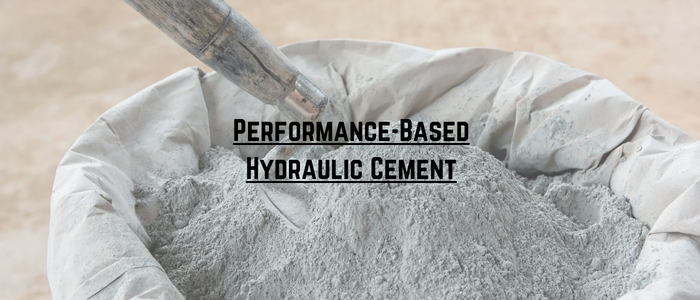Hydraulic cement is a binding material that is crucial in modern construction since it provides the basis for creating structures that are durable and reliable.
“Hydraulic” is a term that was used to describe cement that reacts with water to form a solid material (due to the hydration reaction).
The American Society for Testing and Materials (ASTM) C1157 standard outlines the specifications for various types of hydraulic cement, emphasizing performance-based criteria over prescriptive ingredient restrictions.
Performance-based criteria mean that the judgment is made based on the overall performance, not on the ingredients. So, you can use what you want as an ingredient, but the performance should meet certain criteria.
ASTM C1157 gives six types of hydraulic cement:
Types of Hydraulic Cement
- Type GU (General Use)
When specific qualities of other types are not required, Type GU cement is adaptable and ideal for a variety of applications. Pavements, floors, pipes, bridges, reinforced concrete structures, precast concrete products, and other construction projects where Type I cement is usually used are examples of common usage. Type I is the most commonly used cement.
- Type HE (High Early Strength)
Type HE cement is intended to reach greater strengths quickly—typically in a week or less. It meets the same 1- and 3-day strength standards as Type III Portland cement, which gives it similarities. When working on projects that need quick strength development, this kind of cement is perfect; for example, repair applications.
- Type MS (Moderate Sulfate Resistance)
When defense against mild sulfate assault is essential, type MS cement is used. Drainage structures are frequently used in regions where groundwater sulfate concentrations are high. Type MS cement, like Type II and II (MH) Portland cement, needs a low water-to-cementitious material ratio to guarantee sufficient sulfate resistance.
- Type HS (High Sulfate Resistance)
Particularly made for concrete subjected to strong sulfate action, Type HS cement. It is used in regions with a high sulfate concentration in the soil or groundwater. Low water-to-cementitious material ratios are necessary, much like Type V Portland cement, to provide the best performance in sulfate-rich conditions.
- Type MH (Moderate Heat of Hydration)
Applications requiring a regulated temperature increase and a mild heat of hydration are appropriate for type MH cement. The use of it is similar to that of Type II (MH) Portland cement, which makes it a great option for projects requiring controlled heat generation during the hardening process.
- Type LH (Low Heat of Hydration)
When it’s important to minimize the rate and amount of heat created during hydration, type LH cement is used. It is appropriate for large concrete constructions when a slight temperature increase is required since it gains strength more slowly than other cement kinds. It functions as a substitute for Type IV Portland cement or can be used in a manner akin to that of Type IP (LH) or IT (P≥S) (LH) blended cement.
Summary
A thorough foundation for performance-based hydraulic cement is provided by ASTM C1157, allowing for freedom in choosing the best kind for a range of construction applications. This standard lets engineers and contractors select cements that are specifically suited to their projects by putting more emphasis on the needs of physical performance tests than on strict ingredient standards. To ensure that concrete buildings are successful and long-lasting in a variety of construction circumstances, it is crucial to comprehend the features and uses of each kind as described in ASTM C1157.
Read Also:
